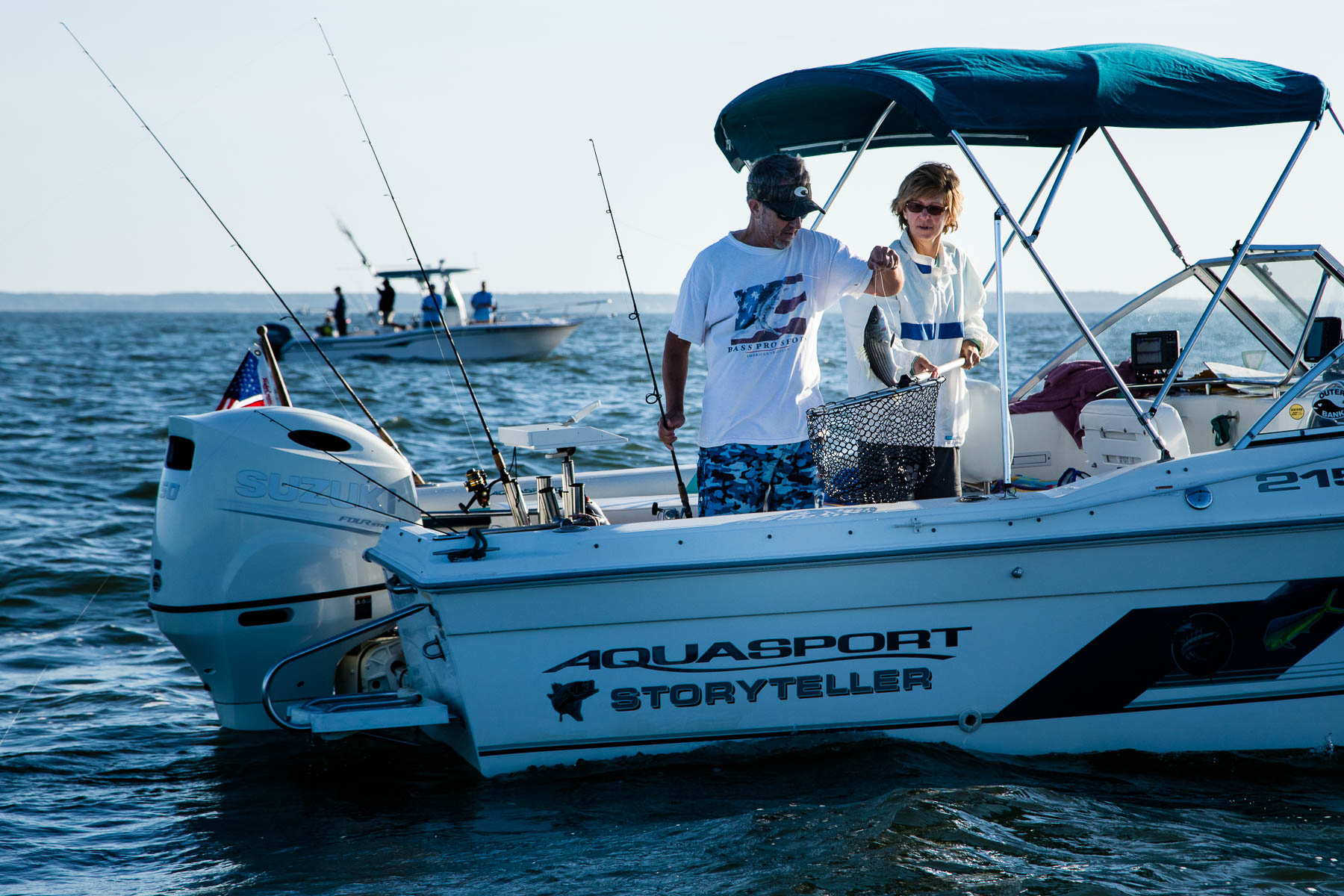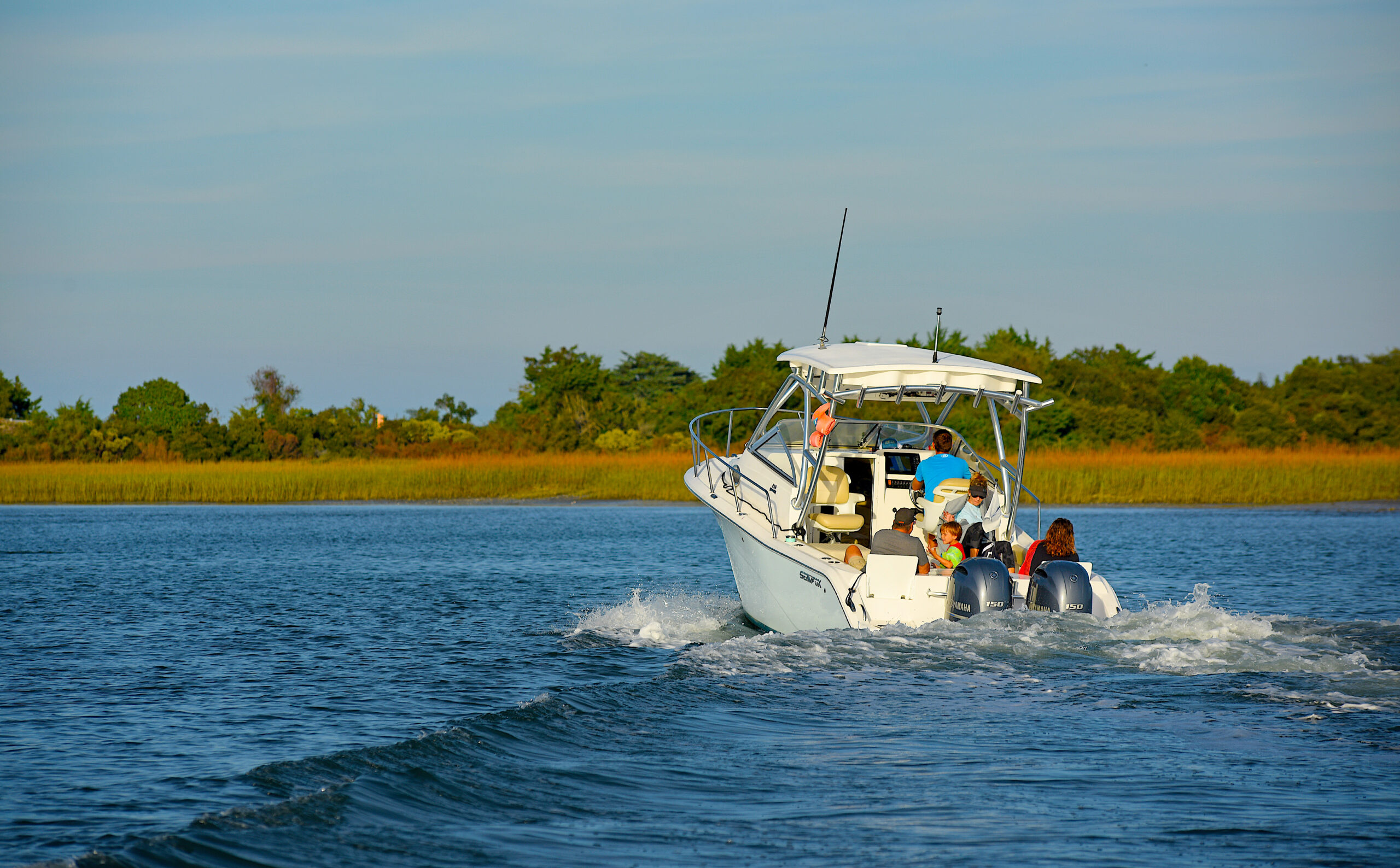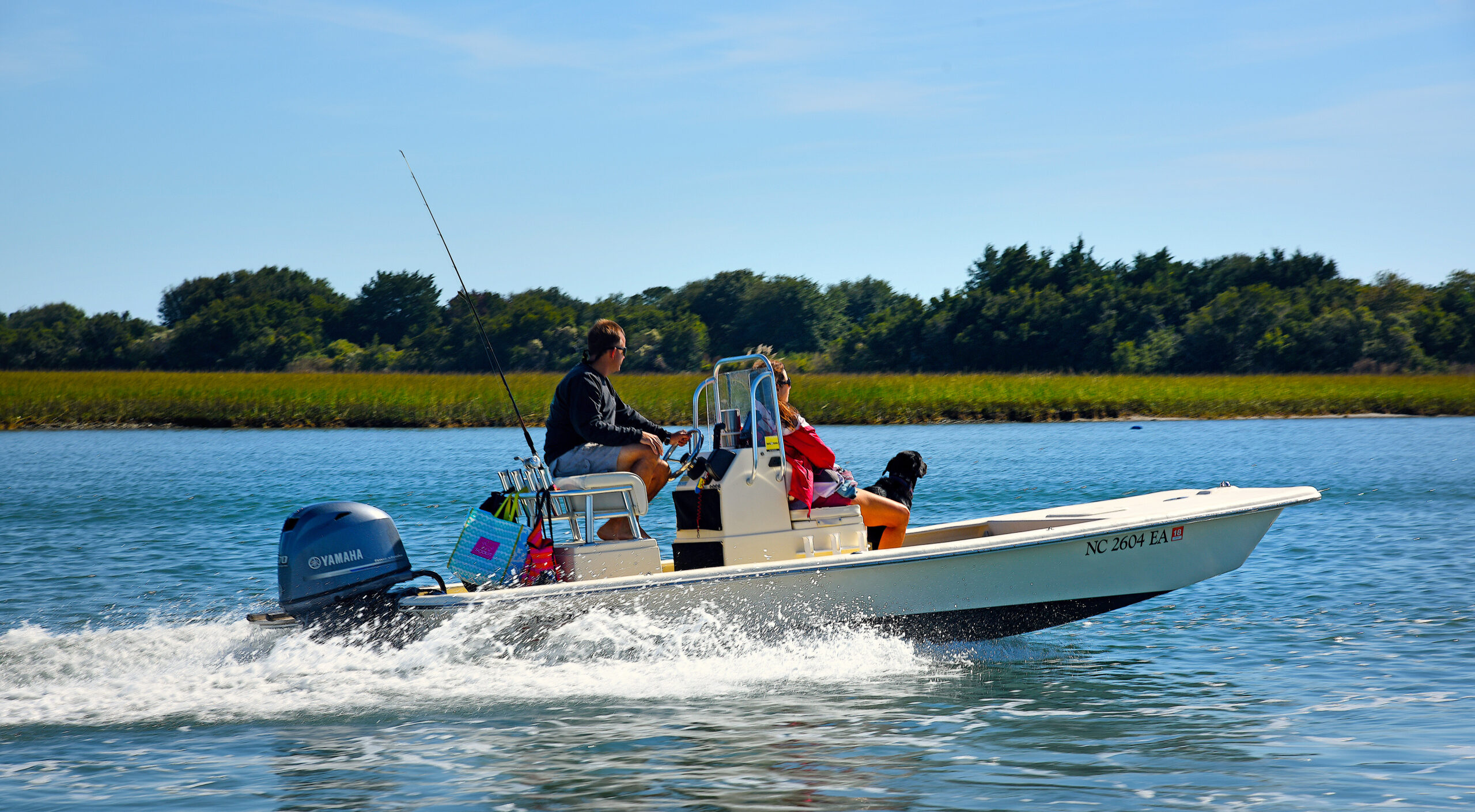Will You Find More Big Fish During the Day or Night?

Sonar imaging revealed when different-sized fish visit oyster reefs.
Research Need
Oysters provide important structural habitat along coastlines. Anglers who fish in inlets know the surrounding water in the estuaries is usually murky or turbid, which makes it quite challenging for researchers to assess which marine creatures are swimming past, living in, or stopping by oyster reefs.
Current methods to evaluate oyster reefs typically require direct capture, which is often destructive and sometimes lethal. Scientists wanted to determine if acoustic imaging sonar could sample the numbers and size of swimming organisms, but in a way that was not harmful to the organisms and that did not require the substantial time delay for processing that usually follows field sampling.
What did they study?
Researchers placed high-frequency sonar imaging devices in ten fringing intertidal oyster reefs in Georgetown County, South Carolina. The scientists used high-frequency sonar to reduce the risk of harming the aquatic life they were studying.
Their objective was to collect estimates of the numbers and size of fish swimming past the reefs. Because they were using sonar imaging, they could collect information day and night.
What did they find?
In total, they counted over 4,500 fish during the daytime and over 1,900 at night. The number of fish per site ranged from seven to 800.
Results of the sampling showed that there was a higher number of small fish in the reefs during the day, but the average fish size was smaller at night. That said, there also were several instances where a few very large fish were detected at night but not during the day.
One limitation of the study is that the sonar images are not detailed enough for scientists to reliably determine the fish species. However, pairing the sonar imaging with the regular catch data can be useful for evaluating the overall numbers of fish in an estuarine habitat under murky or dark conditions.
What’s Next?
Sonar could be useful for comparing different types or ages of restored artificial reefs, as well as to compare communities on different reef types. Researchers also could use repeated deployments of sonar to check habitat use across annual, seasonal, or tidal stages.
Reading
Dunn, R. P., Kimball, M. E., O’Brien, C. G., & Adams, N. T. (2022). Characterising fish habitat use of fringing oyster reefs using acoustic imaging. Marine and Freshwater Research, 74(1), 39–49. https://doi.org/10.1071/mf22081.
This project was made possible with funds from the National Estuarine Research Reserve System (NERRS) Science Collaborative Catalyst grant. Student support was provided by the Franklin H. and Virginia M. Spivey Summer Undergraduate Fellowships in Marine Research and Education program at the Baruch Marine Field Laboratory (CGO) and the Department of Forestry Management Technology at Horry-Georgetown Technical College (NTA). The ARIS system was obtained with funds from the National Science Foundation (NSF) Field Stations and Marine Labs (FSML) program (award #1522490). The annual operations award to the North Inlet–Winyah Bay National Estuarine Research Reserve (National Oceanic and Atmospheric Administration grants NA20NOS4200030 and NA21NOS420039) also provided support.
By Christine Ryan.
Lead photo: The winner of the Chesapeake Bay Foundation’s tournaments on restored oyster reefs is the angler who catches the greatest variety of species. Credit: Will Parson/NOAA’s Chesapeake Bay Program.
The text from Hook, Line & Science is available to reprint and republish at no cost with this attribution: Hook, Line & Science, courtesy of Scott Baker and Sara Mirabilio, North Carolina Sea Grant.



